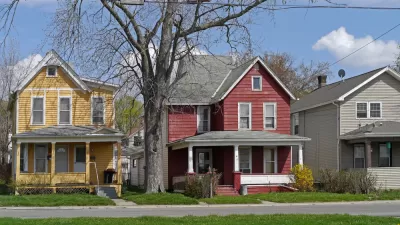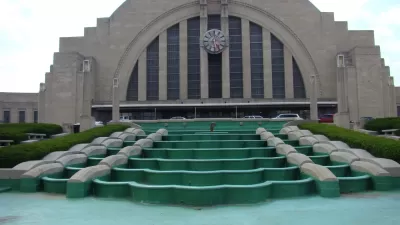The emotional attachment to old homes can obscure the benefits of new buildings, which consume less energy and provide more amenities for residents.

As housing prices continue their astronomic rise and the supply of housing remains inadequate, writes M. Nolan Gray, "Americans are paying ever more exorbitant prices for old housing that is, at best, subpar and, at worst, unsafe." Despite sentimental attachments to old homes and historic properties, Gray argues that new construction is objectively better: safer, more cost-effective, and more energy-efficient than older houses. Gray points to lead house paint(legal until 1978), lead pipes(common until the 1980s), faulty electrical systems, and poor accessibility as some of the issues that should make older homes less desirable. Modern homes provide mandatory safety features such as sprinkler systems, use less energy for heating and cooling thanks to improved insulation and HVAC technology, and include amenities like larger bathrooms and in-unit laundry.
Despite this, cities across the country make it difficult or nearly impossible to redevelop old housing stock, often in the name of affordability or historic preservation. "Between apartment bans, strict density limits, and minimum parking requirements, taking an old home and turning it into an apartment building, or even two or three modern townhouses, is in many cases illegal," asserts Gray.
By contrast, Japan takes a different approach to redevelopment: the average home in that country is demolished after 30 years, with 87 percent of homes sold being new, while a steady supply of newly constructed homes keeps Tokyo affordable for its growing population.
FULL STORY: Stop Fetishizing Old Homes

Alabama: Trump Terminates Settlements for Black Communities Harmed By Raw Sewage
Trump deemed the landmark civil rights agreement “illegal DEI and environmental justice policy.”

Planetizen Federal Action Tracker
A weekly monitor of how Trump’s orders and actions are impacting planners and planning in America.

The 120 Year Old Tiny Home Villages That Sheltered San Francisco’s Earthquake Refugees
More than a century ago, San Francisco mobilized to house thousands of residents displaced by the 1906 earthquake. Could their strategy offer a model for the present?

In Both Crashes and Crime, Public Transportation is Far Safer than Driving
Contrary to popular assumptions, public transportation has far lower crash and crime rates than automobile travel. For safer communities, improve and encourage transit travel.

Report: Zoning Reforms Should Complement Nashville’s Ambitious Transit Plan
Without reform, restrictive zoning codes will limit the impact of the city’s planned transit expansion and could exclude some of the residents who depend on transit the most.

Judge Orders Release of Frozen IRA, IIJA Funding
The decision is a victory for environmental groups who charged that freezing funds for critical infrastructure and disaster response programs caused “real and irreparable harm” to communities.
Urban Design for Planners 1: Software Tools
This six-course series explores essential urban design concepts using open source software and equips planners with the tools they need to participate fully in the urban design process.
Planning for Universal Design
Learn the tools for implementing Universal Design in planning regulations.
Clanton & Associates, Inc.
Jessamine County Fiscal Court
Institute for Housing and Urban Development Studies (IHS)
City of Grandview
Harvard GSD Executive Education
Toledo-Lucas County Plan Commissions
Salt Lake City
NYU Wagner Graduate School of Public Service





























